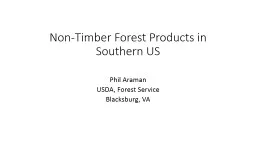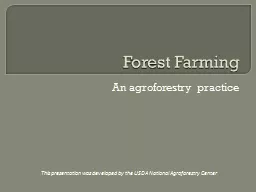PDF-U. S. DEPARTMENT OF AGRICULTURE FOREST SERVICE FOREST PRODUCTS LABORAT
Author : cheryl-pisano | Published Date : 2017-11-28
SEASONING SMALL QUANTITIES OF LUMBER E F RASMUSSEN Engineer Forest Products Laboratory Forest Service US Department of Agriculture The owner of a small quantity
Presentation Embed Code
Download Presentation
Download Presentation The PPT/PDF document "U. S. DEPARTMENT OF AGRICULTURE FOREST S..." is the property of its rightful owner. Permission is granted to download and print the materials on this website for personal, non-commercial use only, and to display it on your personal computer provided you do not modify the materials and that you retain all copyright notices contained in the materials. By downloading content from our website, you accept the terms of this agreement.
U. S. DEPARTMENT OF AGRICULTURE FOREST SERVICE FOREST PRODUCTS LABORAT: Transcript
Download Rules Of Document
"U. S. DEPARTMENT OF AGRICULTURE FOREST SERVICE FOREST PRODUCTS LABORAT"The content belongs to its owner. You may download and print it for personal use, without modification, and keep all copyright notices. By downloading, you agree to these terms.
Related Documents














